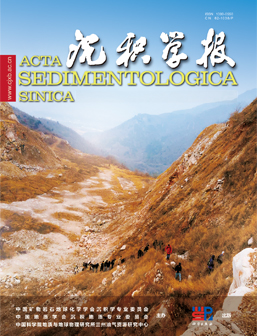Tectonic and Crustal Evolution in the Dabie Region: Constraints from U-Pb-Hf Isotopes of River Clastic Zircons
doi: 10.14027/j.issn.1000-0550.2024.0041
- Received Date: 2023-10-30
- Available Online: 2024-04-28
-
Key words:
- Dabie region /
- River debris zircon /
- U-Pb-Hf isotope /
- Crustal evolution /
- Magmatic metamorphic events
Abstract: The formation and evolution of the Earth's crust is an important aspect of studying the early evolution of the Earth towards livable planets. The successive discovery of early basement rocks and their zircon age information in the Dabie region has made it an important place to study the early Earth. Compared with the limited exposure of basement rocks, the detrital zircons in river sediments can comprehensively reflect the geological evolution information of the source area, and are an effective means to explore the growth and evolution of continental crust. This article conducts U-Pb Hf isotope analysis of zircons in detrital sediments from three different rivers in the Dabie region. The U-Pb zircon age peaks obtained can be divided into four groups: 2676-2424 Ma, 2035-1812 Ma, 890-748 Ma, and 140-120 Ma. Based on the data in this article and previous research results, the following conclusions can be drawn: (1) The magmatic activity records in the Dabie region can be roughly divided into 10 stages and 5 cycles. The quiet periods are 3.0-2.9Ga, 2.4-2.1Ga, 1.8-0.9Ga, 0.70-0.14Ga, and the explosive periods are 4.0-3.0Ga, 2.9-2.4Ga, 2.1-1.8Ga, 0.9-0.7Ga, 0.14-0.12Ga, respectively. (2) The Dabie region mainly experienced four stages of metamorphic events, which occurred in the late Neoarchean (~2.5Ga), middle Paleoproterozoic (~2.0Ga), Triassic (0.24-0.20Ga), and Cretaceous (0.14-0.12Ga). (3) The Dabie region mainly experienced four stages of crustal growth events: initial crustal growth during the Mesozoic era, and massive crustal growth at 4.4-4.1Ga; The crustal growth at 4.1~3.9Ga is relatively slow, with no significant crustal growth; 3.9~2.8Ga sustained crustal growth; The crustal growth rate is relatively slow at 2.8~1.0Ga. (4) Compared to the magmatic, metamorphic, and crustal growth events in the Dabie and Huangling regions, there is a significant difference between the two before~2.0Ga, suggesting that the two were more likely independent micro landmasses before this time.
| Citation: | Tectonic and Crustal Evolution in the Dabie Region: Constraints from U-Pb-Hf Isotopes of River Clastic Zircons[J]. Acta Sedimentologica Sinica. doi: 10.14027/j.issn.1000-0550.2024.0041 |






 DownLoad:
DownLoad: